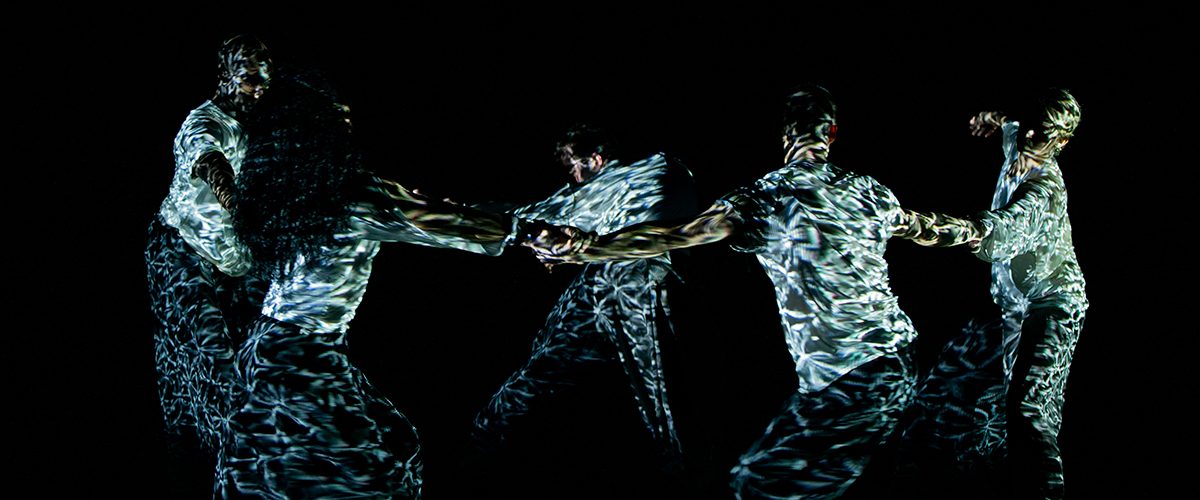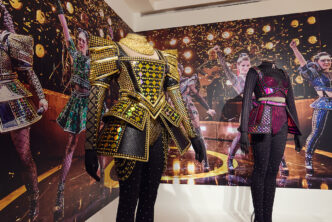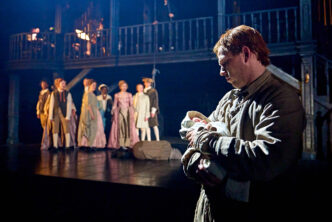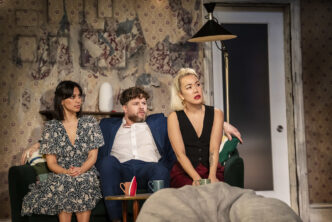Multi-award-winning choreographer, Russell Maliphant talks to Quays Life about Silent Lines, a ground-breaking new dance production with video artist, Panagiotis Tomaras.
Can you tell us a bit about your new work Silent Lines?
Silent Lines is a work for 5 exceptional dancers – with projections used to create a fluidly shifting atmosphere using animations by Panagiotis Tomaras. The music has been created by Dana Fouras and passes seamlessly from classical to electronic and the costumes have been created by Stevie Stewart of Bodymap.
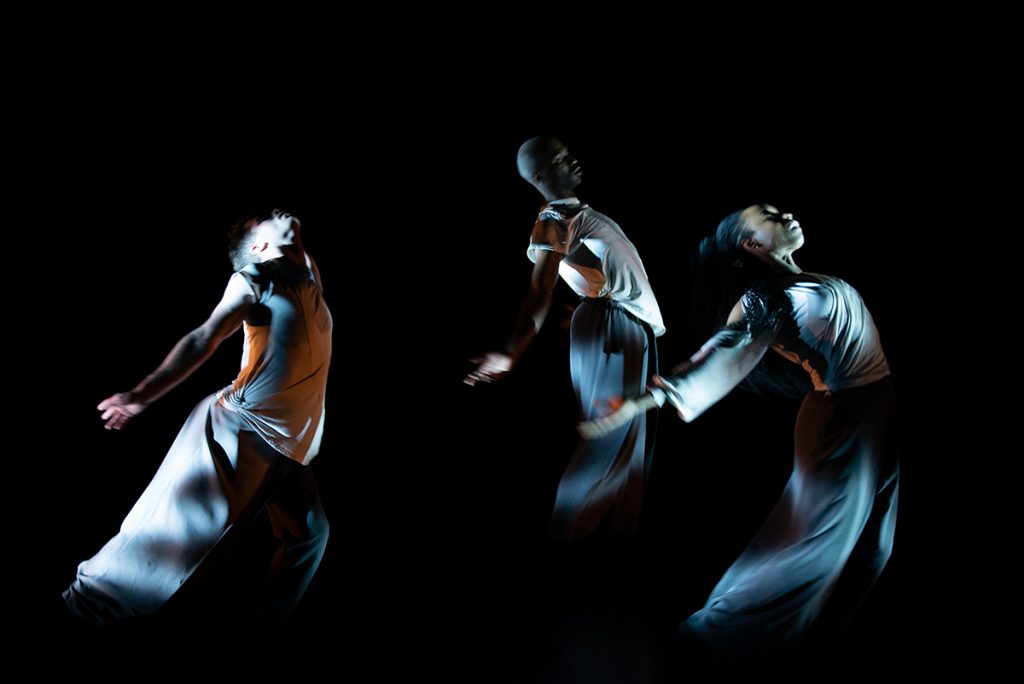
Russell Maliphant’s Silent Lines – Will Thompson; Moronfoluwa Odimayo; Alethia Antonia ©Martin Collins
What was the inspiration behind its creation?
The intention for this piece was to use some of the elements I am often exploring behind the scenes that effect movement and use those elements to create an aesthetic language. In this way, ideas and images from inside the body were projected to create spaces and textures within the stage environment to be manipulated by the dancers’ movement.
Their movement language has a shared ground but is also unique and personal to each dancer and their participation was another inspiration behind the project.
Why did you choose to work on this with video artist, Panagiotis Tomaras?
I had already undertaken a few days of research and development for this project when I met Panagiotis. I knew I wanted to use projected images and when I met Panagiotis I believed he would be able to understand what I wanted and also bring his attitude and eye to the table.
How does Tomaras’ work enhance the audience’s experience of the dance?
It’s hard to separate the dance and the image that the audience see. In creating, we are working with where the elements meet together. The light and the movement are often created side-by-side and inform each other. The light might transform the movement by giving a texture or setting it within a visual environment that’s fluid and dreamlike.
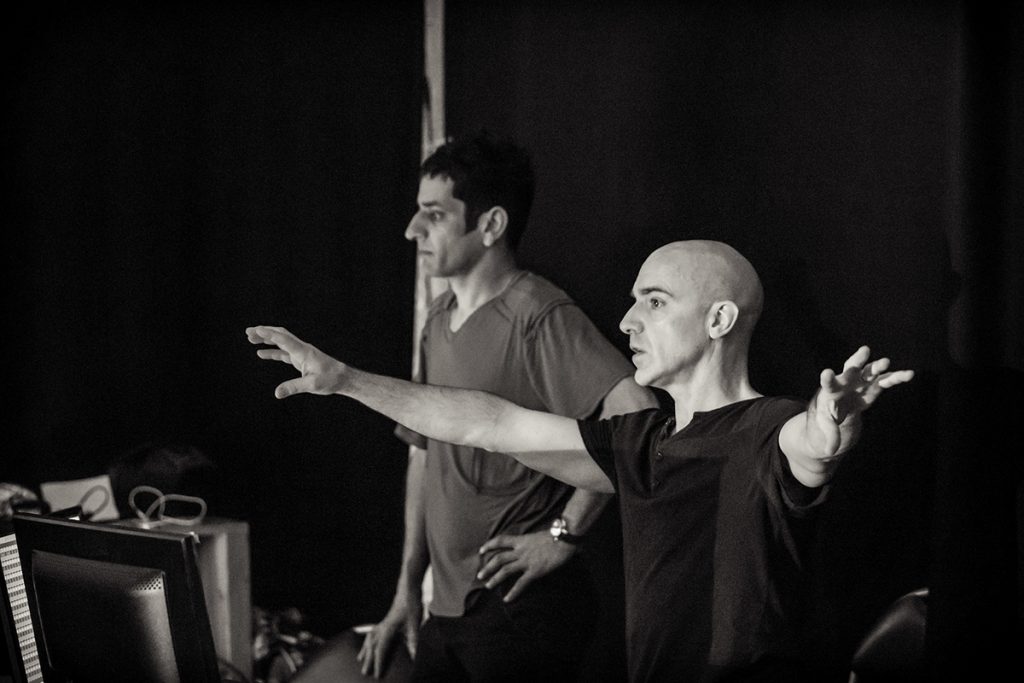
Why is the impact of lighting so central to your choreography?
Because it’s another fluid, moving element that can have a subtle or enormous impact on the stage space and the image of the dancers within that space. It can highlight or conceal choreographic elements and transform the apparent environment.
What drew you to research anatomy, biomechanics and the body’s fascial system?
I have had an interest in anatomy since I first experience an injury and felt relief from seeing an osteopath. They gave me information about my body that I didn’t have before (for example, one leg longer than the other, one hip higher and rotated forward or twisted to the left etc. Rt sidebend in the lumbars and left sidebend in the thoracic spine – scoliosis) Also from seeing some good masseurs I realised how much better my body could feel when worked on effectively. I wanted to know why, and how so that I could begin to apply some of that information to my practice and thereby improve the balance of my body for movement. That lead me to a ‘foundations in bodywork’ course and then training in the Rolfing method of Structural Integration, which has a particular focus on how the fascial system effects the body’s structural balance and movement patterns.
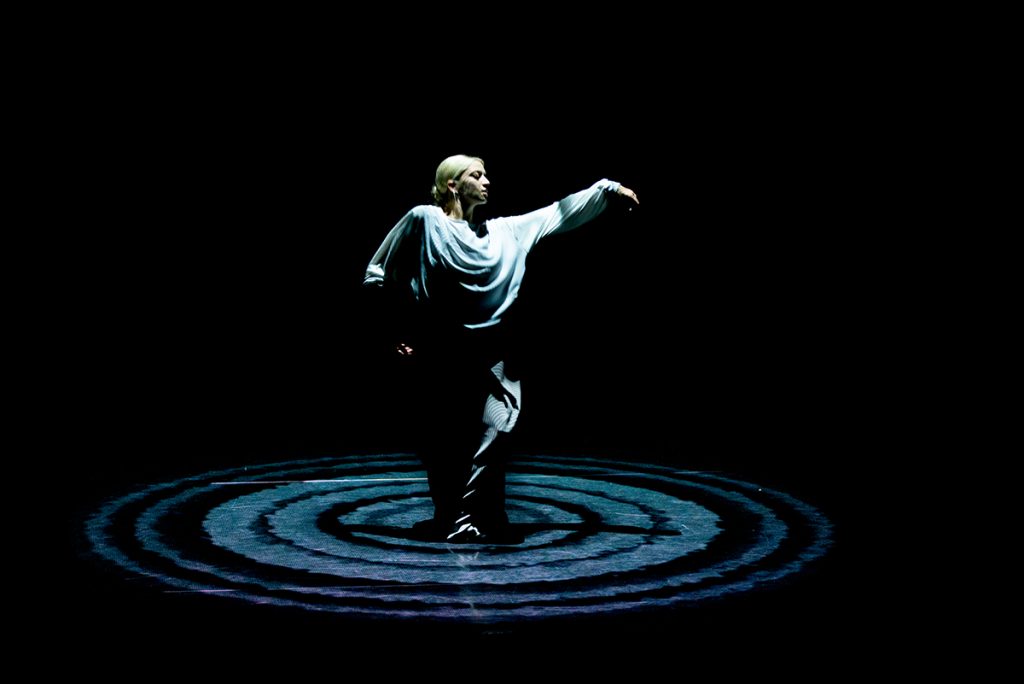
Russell Maliphant’s Silent Lines – Grace Jabbari ©Martin Collins
What fascinates you most about experiential anatomy?
The way it influences and alters movement flow and connection or co-ordination patterns.
Knowing something intellectually might not make the same changes, but exploring connections physically seems to shift something about inherent patterns of movement and can fill in blank areas of proprioceptive understanding and give more choices about the subtle elements of how a movement might be carried out – which for me is a very choreographic concern.
How has this influenced your work as a choreographer?
It has influenced my way of seeing movement and therefore what I find myself digging down into. In this work in particular, it has also influenced the aesthetic of Silent Lines through the visual projections into the space or onto the body, as a lot of the images are drawn or inspired by images from the internal environment of the body (relating to the internal structures and processes of the body).
Outside of work, has it influenced you in any ways personally?
I would find it hard to know where what I think about professionally, is not what I think about personally – it influences and infiltrates how I dig the garden or brush my teeth, or how I ride a bike at times
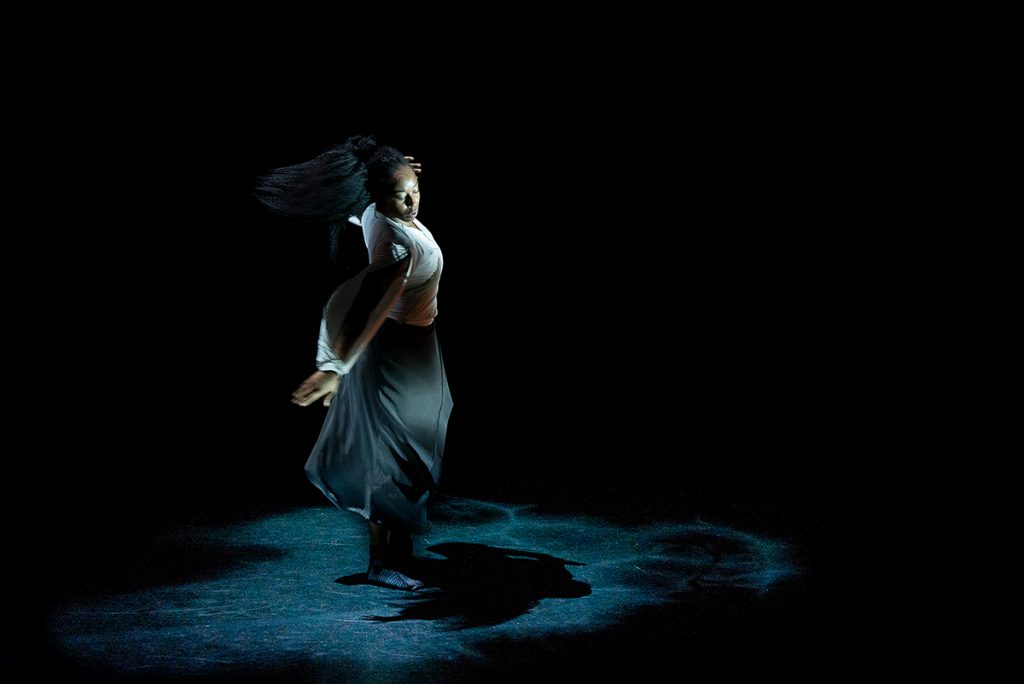
Are there any other art forms you would like to incorporate in future work that you haven’t embraced yet?
I have very rarely worked with a set designer and would love to have more opportunities for that.
What do you hope audiences will take from Silent Lines?
I hope that they will be transported for a time and that images or moments that they witness will remain in their minds for some time.
The Russell Maliphant Company bring Silent Lines to The Lowry, Salford Quays on 29 May 2019. For full tour details visit russellmaliphantdancecompany.com

